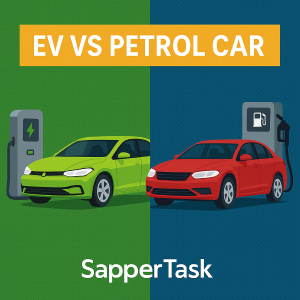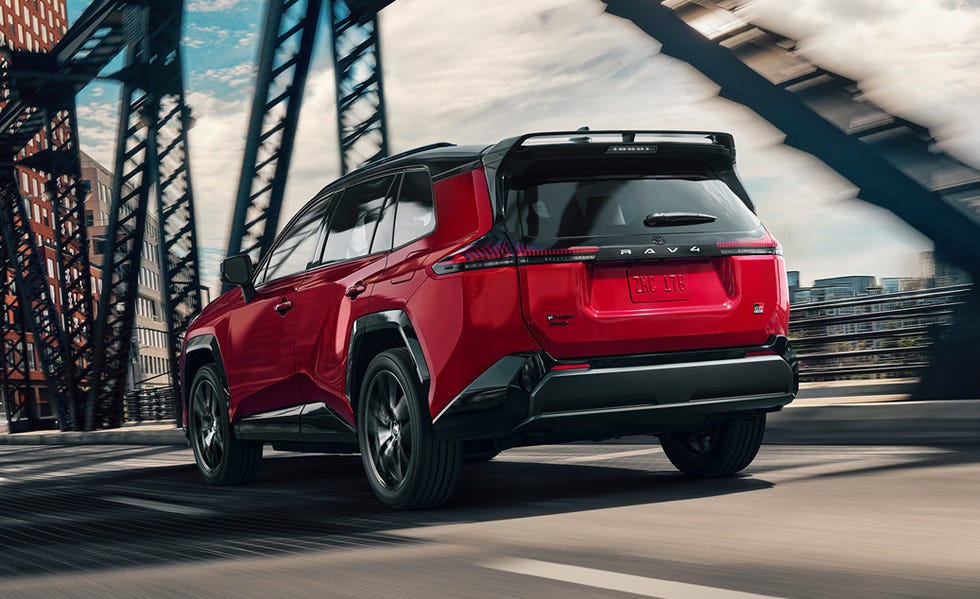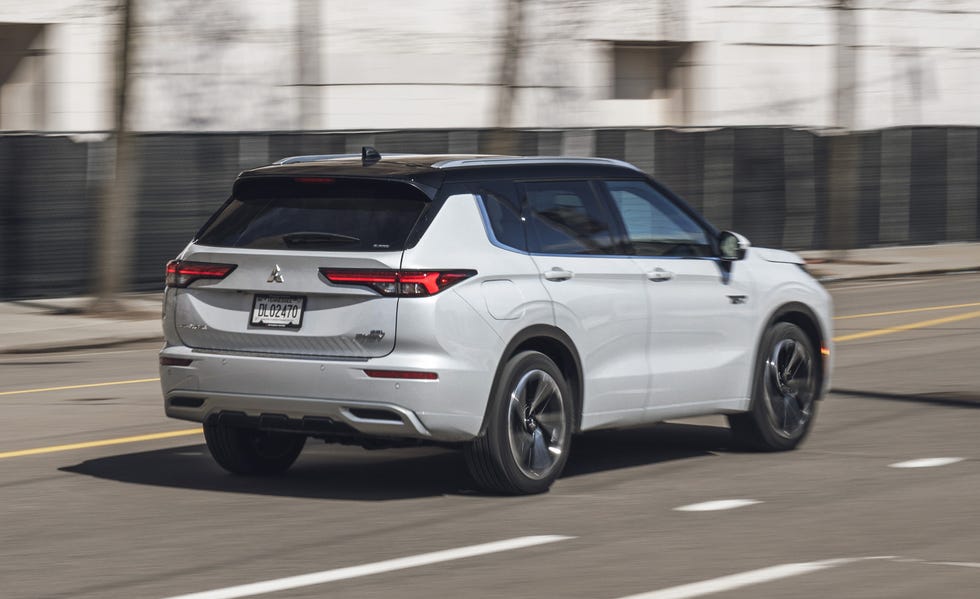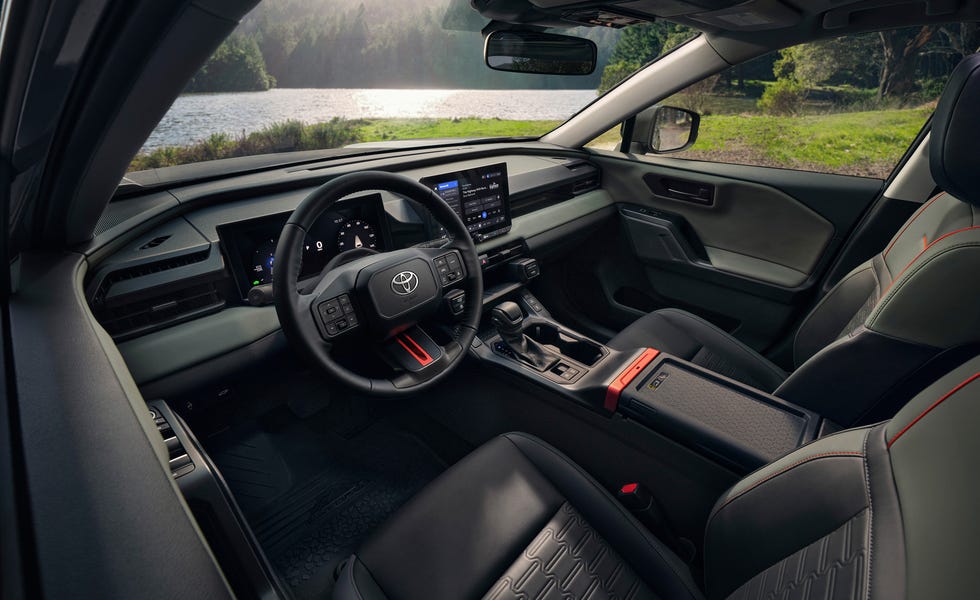2026 Toyota RAV4 PHEV vs. 2025 Mitsubishi Outlander PHEV: How They Compare..


A new Toyota RAV4 doesn't come around every year. Given how the RAV4 is locked in a constant and bitter battle with Ford's F-150 for U.S. bestseller status, any changes to Toyota's money-printer had better be good ones. And boy howdy, the 2026 RAV4 comes out swinging.
There's a whole lot of new stuff tucked under the RAV4's blockier, angrier silhouette. Hybrids can now be optioned with front-wheel drive, the Woodland package became its own standalone trim, and the lineup has positively exploded with plug-in hybrid options. That last bit will be the focus here—PHEVs are growing fast as the market remains tepid on EVs, as they offer the convenience of electric-only operation with the, um, also-convenience of a gas engine.


Mitsubishi's Outlander PHEV is one of the stronger competitors in the RAV4's cohort, so let's see how the two compare on paper. Since PHEVs are available at many points in the RAV4's more-confusing-than-ever lineup, we'll be using the SE and XSE trims for this spec-sheet comparison. The exterior photos here, however, show the GR Sport trim while the interior photo is of the Woodland trim, as Toyota has yet to publish photos of the SE and XSE.
Size and Interior Space
The Mitsubishi Outlander really stretches the definition of "compact," at least when it's hanging out next to the 'Yota. The Outlander PHEV is 185.8 inches long, 4.9 inches longer than the RAV4. The two are nearly the same width, though the Mitsubishi again takes the crown with 74.7 inches against Toyota's 74 inches flat. The Mitsubishi is also 1.8 inches taller, at 68.8 inches. The two have awfully similar wheelbase figures, though; the Mitsubishi's 106.5-inch result is less than an inch ahead of the 105.9-inch RAV4.
There's a pretty obvious extrapolation from this data: The Outlander is more spacious. Having greater dimensions on all three axes means more interior space, though it may also mean tighter fits in parking lots. The jury's still out on cargo space, as Toyota chose not to publish those figures as of this writing.


One secret benefit of the Outlander's swollen dimensions? Versatility. Despite being a compact SUV, the Outlander PHEV offers three rows of seating, though that third row is quite tight.
Powertrain and Towing
If you read the headline or any of the paragraphs above, you'd know that both vehicles are plug-in hybrids. If you scrolled right to this paragraph, congratulations, you're all caught up. Regardless of the trim that contains it, all RAV4 plug-in hybrids include a 2.5-liter four-cylinder gas engine and two electric motors, combining for a net output of 320 horsepower. That's a pretty meaty figure, one that the Outlander's 2.4-liter four-cylinder PHEV powertrain cannot match, though 248 ponies should be more than sufficient for Target runs and the like. Considering the Outlander is both larger (and likely heavier) and less powerful than the Toyota, we know where we'd place our drag-strip bets.
While towing might not be the first thing that comes to mind when thinking of family-friendly compact SUVs, it's still important to some. Either way, the Toyota is the clear winner here. The Outlander can only pull 1500 pounds of detritus, while the Toyota can yank up to 3500. Heck, even the regular hybrid models out-tow the Outlander PHEV. You didn't need that second Jet Ski anyway.
Battery and Charging
Not only does the RAV4 pack on the power, it's also packing on the battery capacity—we think. Toyota estimates a 50-mile range on battery power alone for its wee plug-in, thanks to more capacity and changes to the underlying hardware, namely the semiconductors. How big is the battery? We have no idea; Toyota hasn't divulged that information quite yet. On the other side, the Outlander PHEV packs a battery with 17 kWh of usable capacity, which is good for an estimated range of 38 miles.


When it comes to charging, the Mitsubishi is lacking. All RAV4 PHEVs include an 11-kW onboard AC charger, and XSE and Woodland PHEVs will come with DC fast-charging capability via a CCS port. (Sorry, NACS fans.) The SE and GR Sport will feature a J1772 port and use AC charging. The Outlander looks positively ancient by comparison. Its AC charging taps out at a paltry 3.7 kW, and while DC fast-charging is available, the Outlander relies on the extremely old CHAdeMO standard, which never really gained steam outside of Japan. Good luck explaining that to somebody who doesn't know squat about cars.
Warranty
Mitsubishi's warranty is a bit better than Toyota's, but the two are still pretty evenly matched here. The Outlander PHEV offers a five-year, 60,000-mile limited warranty, against the RAV4's three-year, 36,000-miler. Mitsubishi's 10-year, 100,000-mile powertrain warranty positively dwarfs Toyota's five-year, 60,000-mile one. Things get a little more interesting at the electrification level. Toyota splits that part into eight-year, 100,000-mile coverage for hybrid components and 10-year, 150,000-mile coverage for the battery itself. Mitsubishi's hybrid warranty covers the whole shebang for 10 years or 100,000 miles.
- Bicycle world
- Motorbike world
- E-Bike World
- Auto parts world
- MotorSports
- Auto World
- Art
- Causes
- Crafts
- Dance
- Drinks
- Film
- Fitness
- Food
- Games
- Gardening
- Health
- Home
- Literature
- Music
- Networking
- Other
- Party
- Religion
- Shopping
- Sports
- Theater
- Wellness


